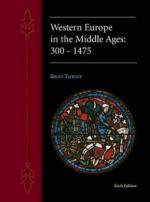|
This section contains 940 words (approx. 4 pages at 300 words per page) |

|
The Scholastic Method. In the Roman Empire, philosophy became a part of the liberal arts taught in the Roman schools. This tradition of teaching and debating philosophy continued in the Latin West. Scholasticism is the name given to the "School Philosophy" of the Middle Ages. It is not the name for a particular doctrine. The Scholastics—philosophers such as Peter Abelard, Robert Grosseteste, Roger Bacon, Thomas Aquinas, Henry of Ghent, John Duns Scotus, and William of Ockham—did not hold the same philosophical or theological views. They exhibited great originality in constructing their positions, and they were not afraid to disagree with one another. What they did share was a method of examining a variety of doctrinal positions in a thorough, logical manner. In fact, the word Scholasticism denotes a common style of "doing philosophy and theology." Peter Abelard helped...
|
This section contains 940 words (approx. 4 pages at 300 words per page) |

|




